Best Pharma Mutual Funds in India 2025
The pharma sector is often called India’s “sunrise industry” – it not only meets domestic healthcare needs but also supplies medicines to the world. For investors, this sector has delivered resilience during crises (like Covid-19) and continues to show strong long-term growth potential.

That’s where Pharma Mutual Funds come in. These are sectoral funds that invest in pharmaceutical, healthcare, and allied companies, giving you exposure to one of India’s most promising industries.
But are they right for your Portfolio? Let’s explore.
What are Pharma Mutual Funds?
Pharma Mutual Funds are sectoral Equity Funds that invest primarily in companies from:
- Pharmaceuticals
- Biotechnology
- Hospitals & healthcare services
- Medical equipment & diagnostics
Since they are sector-specific, they carry higher risk than Diversified Funds, but also offer the chance to capture outsized gains when the sector outperforms.
Why Invest in Pharma Sector Funds?
Here’s why the Indian pharma industry is considered a strong bet:
1. India: The Pharmacy of the World
- India supplies 20% of global generic medicines and is the largest vaccine manufacturer.
- Nearly 40% of US generic drug demand is met by Indian companies.
2. Rising Domestic Demand
- With growing middle-class income, lifestyle changes, and rising health awareness, healthcare spending in India is expected to rise sharply.
- health insurance penetration is improving, further fuelling demand.
3. Government Push
- Schemes like PLI (Production Linked Incentives) aim to boost domestic manufacturing of critical drugs and APIs.
- Ayushman Bharat and other healthcare programmes are expanding access.
4. Export Growth & Innovation
- Indian pharma is moving up the value chain with biosimilars, specialty drugs, and contract research.
- Exports remain a major driver – particularly to regulated markets like the US and EU.
In short: Pharma funds allow you to benefit from both domestic consumption growth and global demand for cost-effective drugs.
Talk to our investment specialist
Fund Selection Methodology used to find 10 funds
Best Pharma Sector Funds 2025
Fund NAV Net Assets (Cr) 3 MO (%) 6 MO (%) 1 YR (%) 3 YR (%) 5 YR (%) 2024 (%) TATA India Pharma & Healthcare Fund Growth ₹30.6732
↓ -0.26 ₹1,309 -1.6 3.7 5.1 22.2 17.7 40.4 Nippon India Pharma Fund Growth ₹517.757
↓ -3.39 ₹8,357 -0.9 4.1 4.7 22 17.9 34 UTI Healthcare Fund Growth ₹287.922
↓ -2.44 ₹1,119 -2.6 5.8 4.2 23.9 17.4 42.9 SBI Healthcare Opportunities Fund Growth ₹434.612
↑ 0.61 ₹3,963 0.5 4 5.2 24.5 19.4 42.2 Note: Returns up to 1 year are on absolute basis & more than 1 year are on CAGR basis. as on 18 Nov 25 Research Highlights & Commentary of 4 Funds showcased
Commentary TATA India Pharma & Healthcare Fund Nippon India Pharma Fund UTI Healthcare Fund SBI Healthcare Opportunities Fund Point 1 Lower mid AUM (₹1,309 Cr). Highest AUM (₹8,357 Cr). Bottom quartile AUM (₹1,119 Cr). Upper mid AUM (₹3,963 Cr). Point 2 Established history (9+ yrs). Established history (21+ yrs). Oldest track record among peers (26 yrs). Established history (20+ yrs). Point 3 Not Rated. Top rated. Rating: 1★ (lower mid). Rating: 2★ (upper mid). Point 4 Risk profile: High. Risk profile: High. Risk profile: High. Risk profile: High. Point 5 5Y return: 17.70% (lower mid). 5Y return: 17.93% (upper mid). 5Y return: 17.43% (bottom quartile). 5Y return: 19.42% (top quartile). Point 6 3Y return: 22.18% (lower mid). 3Y return: 21.99% (bottom quartile). 3Y return: 23.92% (upper mid). 3Y return: 24.51% (top quartile). Point 7 1Y return: 5.07% (upper mid). 1Y return: 4.68% (lower mid). 1Y return: 4.16% (bottom quartile). 1Y return: 5.16% (top quartile). Point 8 Alpha: 3.78 (top quartile). Alpha: -4.31 (bottom quartile). Alpha: 0.79 (lower mid). Alpha: 2.04 (upper mid). Point 9 Sharpe: -0.39 (lower mid). Sharpe: -0.47 (bottom quartile). Sharpe: -0.15 (upper mid). Sharpe: -0.05 (top quartile). Point 10 Information ratio: 0.78 (top quartile). Information ratio: -0.53 (bottom quartile). Information ratio: 0.10 (lower mid). Information ratio: 0.38 (upper mid). TATA India Pharma & Healthcare Fund
Nippon India Pharma Fund
UTI Healthcare Fund
SBI Healthcare Opportunities Fund
All the funds mentioned above are ideal, we are giving you detailed analysis of 3 funds.
The investment objective of the scheme is to seek long term capital appreciation by investing atleast 80% of its net assets in equity/equity related instruments of the companies in the pharma & healthcare sectors in India.However, there is no assurance or guarantee that the investment objective of the Scheme will be achieved.The Scheme does not assure or guarantee any returns. Research Highlights for TATA India Pharma & Healthcare Fund Below is the key information for TATA India Pharma & Healthcare Fund Returns up to 1 year are on The primary investment objective of the scheme is to seek to generate consistent returns by investing in equity and equity related or fixed income securities of Pharma and other associated companies. Research Highlights for Nippon India Pharma Fund Below is the key information for Nippon India Pharma Fund Returns up to 1 year are on (Erstwhile UTI Pharma & Healthcare Fund) The Investment objective of the Scheme is capital appreciation through investments in equities and equity related instruments of the Pharma & Healthcare sectors. Research Highlights for UTI Healthcare Fund Below is the key information for UTI Healthcare Fund Returns up to 1 year are on (Erstwhile SBI Pharma Fund) To provide the investors maximum growth opportunity through equity
investments in stocks of growth oriented sectors of the economy. Research Highlights for SBI Healthcare Opportunities Fund Below is the key information for SBI Healthcare Opportunities Fund Returns up to 1 year are on 1. TATA India Pharma & Healthcare Fund
TATA India Pharma & Healthcare Fund
Growth Launch Date 28 Dec 15 NAV (18 Nov 25) ₹30.6732 ↓ -0.26 (-0.83 %) Net Assets (Cr) ₹1,309 on 31 Aug 25 Category Equity - Sectoral AMC Tata Asset Management Limited Rating Risk High Expense Ratio 2.17 Sharpe Ratio -0.39 Information Ratio 0.78 Alpha Ratio 3.78 Min Investment 5,000 Min SIP Investment 150 Exit Load 0-3 Months (0.25%),3 Months and above(NIL) Growth of 10,000 investment over the years.
Date Value 31 Oct 20 ₹10,000 31 Oct 21 ₹12,776 31 Oct 22 ₹12,763 31 Oct 23 ₹14,596 31 Oct 24 ₹22,921 31 Oct 25 ₹22,928 Returns for TATA India Pharma & Healthcare Fund
absolute basis & more than 1 year are on CAGR (Compound Annual Growth Rate) basis. as on 18 Nov 25 Duration Returns 1 Month -1% 3 Month -1.6% 6 Month 3.7% 1 Year 5.1% 3 Year 22.2% 5 Year 17.7% 10 Year 15 Year Since launch 12% Historical performance (Yearly) on absolute basis
Year Returns 2024 40.4% 2023 36.6% 2022 -8% 2021 19.1% 2020 64.4% 2019 5.5% 2018 -2.6% 2017 4.7% 2016 -14.7% 2015 Fund Manager information for TATA India Pharma & Healthcare Fund
Name Since Tenure Rajat Srivastava 16 Sep 24 1.04 Yr. Data below for TATA India Pharma & Healthcare Fund as on 31 Aug 25
Equity Sector Allocation
Sector Value Health Care 94.07% Basic Materials 2.64% Financial Services 1.58% Asset Allocation
Asset Class Value Cash 1.72% Equity 98.28% Top Securities Holdings / Portfolio
Name Holding Value Quantity Sun Pharmaceuticals Industries Ltd (Healthcare)
Equity, Since 31 Jan 16 | SUNPHARMA10% ₹130 Cr 815,483 Apollo Hospitals Enterprise Ltd (Healthcare)
Equity, Since 31 Dec 16 | APOLLOHOSP5% ₹66 Cr 88,528 Lupin Ltd (Healthcare)
Equity, Since 30 Nov 17 | 5002575% ₹63 Cr 330,887 Cipla Ltd (Healthcare)
Equity, Since 30 Apr 20 | 5000875% ₹63 Cr 418,868
↓ -151,035 Torrent Pharmaceuticals Ltd (Healthcare)
Equity, Since 31 Aug 22 | TORNTPHARM5% ₹61 Cr 168,394 HealthCare Global Enterprises Ltd (Healthcare)
Equity, Since 31 Dec 18 | HCG5% ₹61 Cr 942,453 Aster DM Healthcare Ltd Ordinary Shares (Healthcare)
Equity, Since 31 Dec 22 | ASTERDM5% ₹60 Cr 956,991 Alkem Laboratories Ltd (Healthcare)
Equity, Since 31 Aug 20 | ALKEM4% ₹58 Cr 106,435 Max Healthcare Institute Ltd Ordinary Shares (Healthcare)
Equity, Since 31 Jul 25 | MAXHEALTH4% ₹51 Cr 458,724 Divi's Laboratories Ltd (Healthcare)
Equity, Since 30 Sep 17 | DIVISLAB4% ₹50 Cr 87,918
↑ 4,603 2. Nippon India Pharma Fund
Nippon India Pharma Fund
Growth Launch Date 5 Jun 04 NAV (18 Nov 25) ₹517.757 ↓ -3.39 (-0.65 %) Net Assets (Cr) ₹8,357 on 31 Aug 25 Category Equity - Sectoral AMC Nippon Life Asset Management Ltd. Rating ☆☆ Risk High Expense Ratio 1.81 Sharpe Ratio -0.48 Information Ratio -0.53 Alpha Ratio -4.31 Min Investment 5,000 Min SIP Investment 100 Exit Load 0-1 Years (1%),1 Years and above(NIL) Growth of 10,000 investment over the years.
Date Value 31 Oct 20 ₹10,000 31 Oct 21 ₹13,485 31 Oct 22 ₹13,065 31 Oct 23 ₹15,358 31 Oct 24 ₹23,207 31 Oct 25 ₹23,085 Returns for Nippon India Pharma Fund
absolute basis & more than 1 year are on CAGR (Compound Annual Growth Rate) basis. as on 18 Nov 25 Duration Returns 1 Month 0.8% 3 Month -0.9% 6 Month 4.1% 1 Year 4.7% 3 Year 22% 5 Year 17.9% 10 Year 15 Year Since launch 20.2% Historical performance (Yearly) on absolute basis
Year Returns 2024 34% 2023 39.2% 2022 -9.9% 2021 23.9% 2020 66.4% 2019 1.7% 2018 3.6% 2017 7.6% 2016 -10.6% 2015 19.4% Fund Manager information for Nippon India Pharma Fund
Name Since Tenure Sailesh Raj Bhan 1 Apr 05 20.51 Yr. Kinjal Desai 25 May 18 7.36 Yr. Data below for Nippon India Pharma Fund as on 31 Aug 25
Equity Sector Allocation
Sector Value Health Care 99.47% Asset Allocation
Asset Class Value Cash 0.53% Equity 99.47% Top Securities Holdings / Portfolio
Name Holding Value Quantity Sun Pharmaceuticals Industries Ltd (Healthcare)
Equity, Since 31 Oct 09 | SUNPHARMA12% ₹997 Cr 6,256,349 Lupin Ltd (Healthcare)
Equity, Since 31 Aug 08 | 5002577% ₹589 Cr 3,083,991
↑ 400,000 Divi's Laboratories Ltd (Healthcare)
Equity, Since 31 Mar 12 | DIVISLAB7% ₹569 Cr 1,000,031 Cipla Ltd (Healthcare)
Equity, Since 31 May 08 | 5000876% ₹525 Cr 3,495,054
↑ 295,054 Apollo Hospitals Enterprise Ltd (Healthcare)
Equity, Since 30 Sep 20 | APOLLOHOSP6% ₹481 Cr 648,795 Dr Reddy's Laboratories Ltd (Healthcare)
Equity, Since 30 Jun 11 | 5001246% ₹479 Cr 3,916,074 Vijaya Diagnostic Centre Ltd (Healthcare)
Equity, Since 30 Sep 21 | 5433504% ₹289 Cr 2,886,684 Medplus Health Services Ltd (Healthcare)
Equity, Since 30 Nov 22 | 5434273% ₹275 Cr 3,627,277 Gland Pharma Ltd (Healthcare)
Equity, Since 30 Nov 20 | GLAND3% ₹263 Cr 1,320,549 GlaxoSmithKline Pharmaceuticals Ltd (Healthcare)
Equity, Since 31 Aug 22 | GLAXO3% ₹243 Cr 913,226 3. UTI Healthcare Fund
UTI Healthcare Fund
Growth Launch Date 28 Jun 99 NAV (18 Nov 25) ₹287.922 ↓ -2.44 (-0.84 %) Net Assets (Cr) ₹1,119 on 31 Aug 25 Category Equity - Sectoral AMC UTI Asset Management Company Ltd Rating ☆ Risk High Expense Ratio 2.26 Sharpe Ratio -0.15 Information Ratio 0.1 Alpha Ratio 0.79 Min Investment 5,000 Min SIP Investment 500 Exit Load 0-1 Years (1%),1 Years and above(NIL) Growth of 10,000 investment over the years.
Date Value 31 Oct 20 ₹10,000 31 Oct 21 ₹12,799 31 Oct 22 ₹12,052 31 Oct 23 ₹14,059 31 Oct 24 ₹22,392 31 Oct 25 ₹22,840 Returns for UTI Healthcare Fund
absolute basis & more than 1 year are on CAGR (Compound Annual Growth Rate) basis. as on 18 Nov 25 Duration Returns 1 Month -1.7% 3 Month -2.6% 6 Month 5.8% 1 Year 4.2% 3 Year 23.9% 5 Year 17.4% 10 Year 15 Year Since launch 14.8% Historical performance (Yearly) on absolute basis
Year Returns 2024 42.9% 2023 38.2% 2022 -12.3% 2021 19.1% 2020 67.4% 2019 1.2% 2018 -7.5% 2017 6.2% 2016 -9.7% 2015 12.4% Fund Manager information for UTI Healthcare Fund
Name Since Tenure Kamal Gada 2 May 22 3.42 Yr. Data below for UTI Healthcare Fund as on 31 Aug 25
Equity Sector Allocation
Sector Value Health Care 97.9% Basic Materials 1.07% Asset Allocation
Asset Class Value Cash 1.02% Equity 98.98% Top Securities Holdings / Portfolio
Name Holding Value Quantity Sun Pharmaceuticals Industries Ltd (Healthcare)
Equity, Since 31 Oct 06 | SUNPHARMA10% ₹105 Cr 661,016 Ajanta Pharma Ltd (Healthcare)
Equity, Since 31 Jul 17 | 5323315% ₹60 Cr 250,000
↑ 7,327 Cipla Ltd (Healthcare)
Equity, Since 31 Jan 03 | 5000875% ₹60 Cr 400,000 Lupin Ltd (Healthcare)
Equity, Since 28 Feb 25 | 5002575% ₹52 Cr 270,000 Procter & Gamble Health Ltd (Healthcare)
Equity, Since 31 Dec 20 | PGHL4% ₹44 Cr 69,320
↓ -719 Glenmark Pharmaceuticals Ltd (Healthcare)
Equity, Since 31 Mar 24 | 5322964% ₹41 Cr 210,000
↓ -10,000 Dr Reddy's Laboratories Ltd (Healthcare)
Equity, Since 28 Feb 18 | 5001244% ₹41 Cr 335,000
↓ -25,000 Gland Pharma Ltd (Healthcare)
Equity, Since 30 Nov 20 | GLAND4% ₹40 Cr 199,297 Apollo Hospitals Enterprise Ltd (Healthcare)
Equity, Since 30 Apr 21 | APOLLOHOSP4% ₹39 Cr 53,000 Alkem Laboratories Ltd (Healthcare)
Equity, Since 31 May 21 | ALKEM4% ₹39 Cr 72,000 4. SBI Healthcare Opportunities Fund
SBI Healthcare Opportunities Fund
Growth Launch Date 31 Dec 04 NAV (17 Nov 25) ₹434.612 ↑ 0.61 (0.14 %) Net Assets (Cr) ₹3,963 on 31 Aug 25 Category Equity - Sectoral AMC SBI Funds Management Private Limited Rating ☆☆ Risk High Expense Ratio 1.97 Sharpe Ratio -0.05 Information Ratio 0.38 Alpha Ratio 2.04 Min Investment 5,000 Min SIP Investment 500 Exit Load 0-15 Days (0.5%),15 Days and above(NIL) Growth of 10,000 investment over the years.
Date Value 31 Oct 20 ₹10,000 31 Oct 21 ₹12,709 31 Oct 22 ₹12,920 31 Oct 23 ₹15,414 31 Oct 24 ₹24,279 31 Oct 25 ₹24,895 Returns for SBI Healthcare Opportunities Fund
absolute basis & more than 1 year are on CAGR (Compound Annual Growth Rate) basis. as on 18 Nov 25 Duration Returns 1 Month -0.9% 3 Month 0.5% 6 Month 4% 1 Year 5.2% 3 Year 24.5% 5 Year 19.4% 10 Year 15 Year Since launch 15.3% Historical performance (Yearly) on absolute basis
Year Returns 2024 42.2% 2023 38.2% 2022 -6% 2021 20.1% 2020 65.8% 2019 -0.5% 2018 -9.9% 2017 2.1% 2016 -14% 2015 27.1% Fund Manager information for SBI Healthcare Opportunities Fund
Name Since Tenure Tanmaya Desai 1 Jun 11 14.35 Yr. Data below for SBI Healthcare Opportunities Fund as on 31 Aug 25
Equity Sector Allocation
Sector Value Health Care 90.67% Basic Materials 5.69% Asset Allocation
Asset Class Value Cash 3.64% Equity 96.36% Top Securities Holdings / Portfolio
Name Holding Value Quantity Sun Pharmaceuticals Industries Ltd (Healthcare)
Equity, Since 31 Dec 17 | SUNPHARMA11% ₹430 Cr 2,700,000 Divi's Laboratories Ltd (Healthcare)
Equity, Since 31 Mar 12 | DIVISLAB6% ₹250 Cr 440,000 Max Healthcare Institute Ltd Ordinary Shares (Healthcare)
Equity, Since 31 Mar 21 | MAXHEALTH6% ₹223 Cr 2,000,000
↓ -100,000 Cipla Ltd (Healthcare)
Equity, Since 31 Aug 16 | 5000875% ₹180 Cr 1,200,000 Lupin Ltd (Healthcare)
Equity, Since 31 Aug 23 | 5002574% ₹161 Cr 840,000 Lonza Group Ltd ADR (Healthcare)
Equity, Since 31 Jan 24 | LZAGY4% ₹160 Cr 270,000 Fortis Healthcare Ltd (Healthcare)
Equity, Since 30 Apr 21 | 5328434% ₹145 Cr 1,500,000 Torrent Pharmaceuticals Ltd (Healthcare)
Equity, Since 30 Jun 21 | TORNTPHARM4% ₹144 Cr 400,000 Gland Pharma Ltd (Healthcare)
Equity, Since 30 Nov 20 | GLAND4% ₹139 Cr 700,000 Mankind Pharma Ltd (Healthcare)
Equity, Since 30 Apr 23 | MANKIND3% ₹132 Cr 540,000
↓ -20,000
Benchmark: The Nifty Pharma Index
Pharma Mutual Funds generally track or take cues from the Nifty Pharma Index.
Key Highlights:
- Launched in 2005 by NSE.
- Represents major listed pharma companies.
- Includes top names like Sun Pharma, Dr. Reddy’s, Cipla, Divi’s Labs, Lupin, Aurobindo Pharma, etc.
- The index gives investors a snapshot of the overall sector’s performance.
To more about index can be read on official website Nifty Pharma Index Document
Who Should Invest in Pharma Mutual Funds?
Pharma funds are not for everyone. They are suitable if you are:
- An investor with high risk appetite who can handle sectoral Volatility.
- Looking to diversify your portfolio with exposure to a defensive but growing industry.
- A long-term investor (5+ years) seeking to benefit from structural growth trends in healthcare.
Not suitable for:
- Conservative investors.
- Those looking for short-term quick returns.
Pros & Cons of Investing in Pharma Funds
✅ Pros:
- Strong long-term growth drivers (domestic + exports).
- Defensive nature during downturns (people don’t stop consuming medicines).
- India’s global dominance in generics provides steady demand.
- Sector supported by government incentives.
❌ Cons:
- High volatility as it depends on global regulations (like USFDA warnings).
- Concentration risk – one sector only.
- Currency fluctuations affect export-heavy companies.
- Can underperform diversified funds during phases when pharma lags.
Unique Investor Angles to Consider
Here’s what most articles miss, but you should keep in mind:
Ageing Population = Permanent Demand
Globally, populations are ageing, particularly in developed countries. Indian companies are well-placed to serve this demand.
Shift Towards Wellness & Preventive Healthcare
Pharma is no longer just about medicines. Healthcare funds now capture hospitals, diagnostics, and preventive care businesses – expanding growth scope.
Regulatory Risk is Real
One USFDA ban can wipe out a stock’s value overnight. That’s why pharma funds spread risk across multiple companies.
Covid-19 Lesson
The pandemic proved how pharma can outperform when healthcare demand spikes – but it also showed the need to stay cautious about hype-driven rallies.
How to Invest in Pharma Sector Funds Online?
Open Free Investment Account for Lifetime at Fincash.com.
Complete your Registration and KYC Process
Upload Documents (PAN, Aadhaar, etc.). And, You are Ready to Invest!
Public vs Private Healthcare: Why It Matters for Pharma Investors
India’s healthcare system is unique — while public hospitals account for only 30% of total hospital beds, the rest come from the private sector. This means the majority of patients depend on private care, which directly drives higher demand for medicines, diagnostics, and health insurance.
For pharma investors, this is critical. Unlike other industries, demand here is not cyclical — healthcare is a necessity. The more patients turn to private care, the more they rely on affordable medicines, making pharmaceutical companies long-term revenue generators.
The imbalance also highlights another important point: out-of-pocket expenditure in India is one of the highest in the world, around 48–50% of total healthcare spend. This forces households to prioritise low-cost drugs, generic medicines, and insurance-backed treatments — exactly the segments where Indian pharma companies have a competitive advantage.
Add to this the rise of medical tourism (expected to reach $13 billion+ by 2026), demand for speciality care in tier-2 cities, and a growing middle class that spends more on preventive healthcare. All of these trends ensure steady tailwinds for pharma companies and, by extension, pharma mutual funds.
This trend explains why pharma mutual funds are seen as a defensive bet — they combine healthcare demand certainty with the growth potential of India’s expanding private medical sector. In other words, the gap between public and private healthcare isn’t just a social challenge — it’s an investment signal, and one that smart investors can capture through pharma-focused fund.
Final Thoughts
Pharma Mutual Funds give investors a chance to tap into one of India’s strongest industries – with global leadership in generics, a growing domestic market, and government support. However, these are high-risk, high-reward funds. Don’t allocate more than 10–15% of your portfolio to sectoral funds, and always combine them with diversified mutual funds for stability.
If you believe in the long-term growth of healthcare and India’s role as the “Pharmacy of the World,” pharma funds can be a smart addition to your portfolio.
FAQs on Pharma Mutual Funds
Q1. Are pharma funds risky?
A: Yes, since they are concentrated sector funds. Suitable only for those who can take high risk.
Q2. How do pharma funds compare to diversified equity funds?
A: Diversified funds spread risk across sectors, pharma funds focus only on one. They can outperform in pharma bull runs but underperform otherwise.
Q3. What is the ideal investment horizon?
A: At least 5 years. Short-term Investing in sector funds is not recommended.
Q4. Are pharma funds good for SIPs?
A: Yes, SIPs help average out volatility in sectoral funds.
All efforts have been made to ensure the information provided here is accurate. However, no guarantees are made regarding correctness of data. Please verify with scheme information document before making any investment.

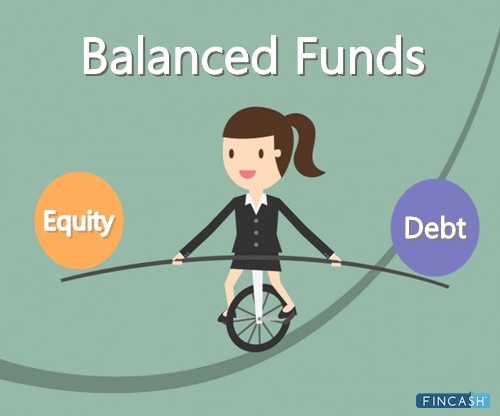
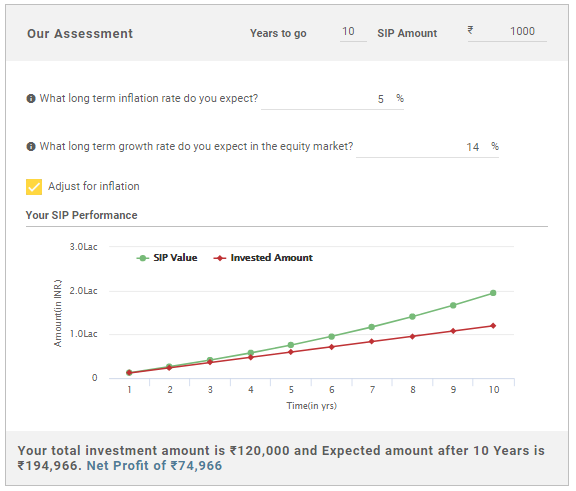
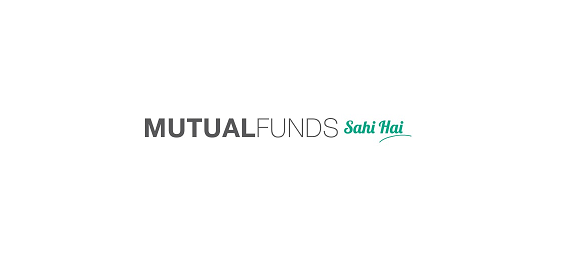
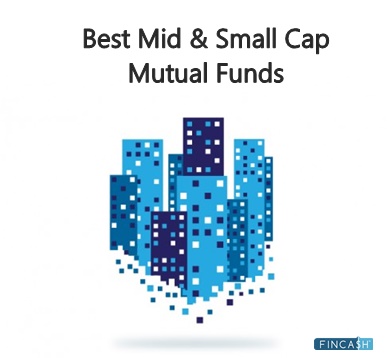
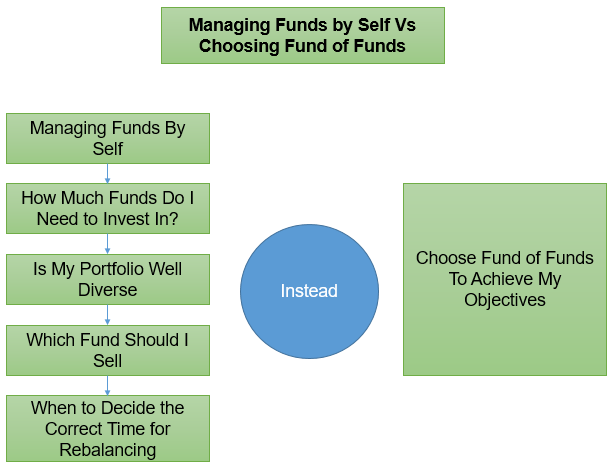
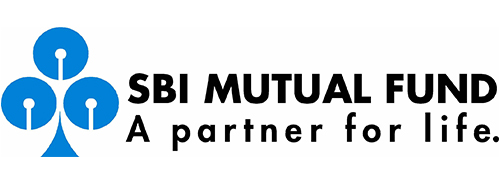





Please send list of funds which has the option of changing the sector of funds so that overall performance of mutual funds are always very good. Thanks and Regards
Are largecap is best investment on longterm